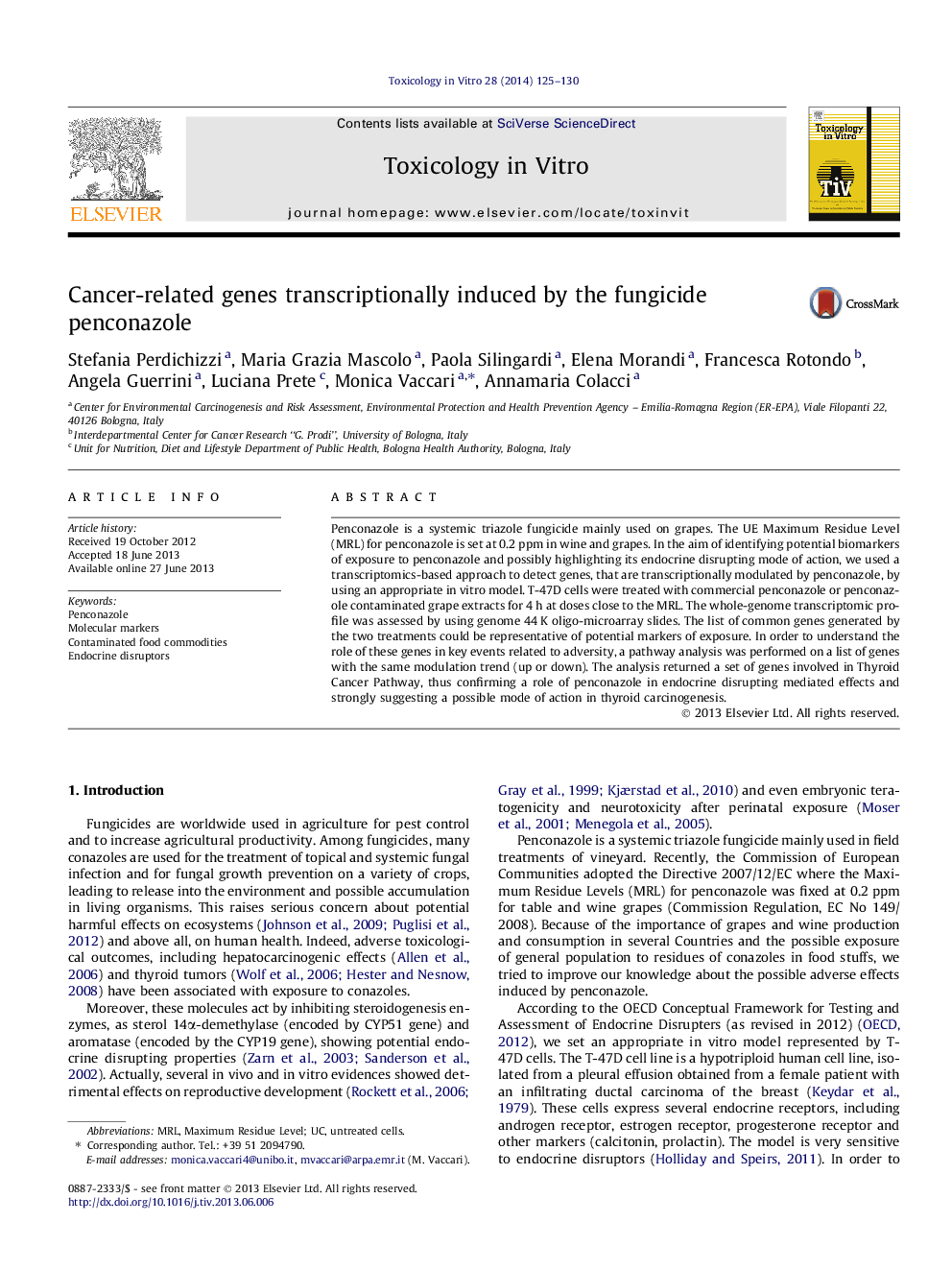| Article ID | Journal | Published Year | Pages | File Type |
|---|---|---|---|---|
| 5862014 | Toxicology in Vitro | 2014 | 6 Pages |
Abstract
Penconazole is a systemic triazole fungicide mainly used on grapes. The UE Maximum Residue Level (MRL) for penconazole is set at 0.2Â ppm in wine and grapes. In the aim of identifying potential biomarkers of exposure to penconazole and possibly highlighting its endocrine disrupting mode of action, we used a transcriptomics-based approach to detect genes, that are transcriptionally modulated by penconazole, by using an appropriate in vitro model. T-47D cells were treated with commercial penconazole or penconazole contaminated grape extracts for 4Â h at doses close to the MRL. The whole-genome transcriptomic profile was assessed by using genome 44Â K oligo-microarray slides. The list of common genes generated by the two treatments could be representative of potential markers of exposure. In order to understand the role of these genes in key events related to adversity, a pathway analysis was performed on a list of genes with the same modulation trend (up or down). The analysis returned a set of genes involved in Thyroid Cancer Pathway, thus confirming a role of penconazole in endocrine disrupting mediated effects and strongly suggesting a possible mode of action in thyroid carcinogenesis.
Related Topics
Life Sciences
Environmental Science
Health, Toxicology and Mutagenesis
Authors
Stefania Perdichizzi, Maria Grazia Mascolo, Paola Silingardi, Elena Morandi, Francesca Rotondo, Angela Guerrini, Luciana Prete, Monica Vaccari, Annamaria Colacci,
